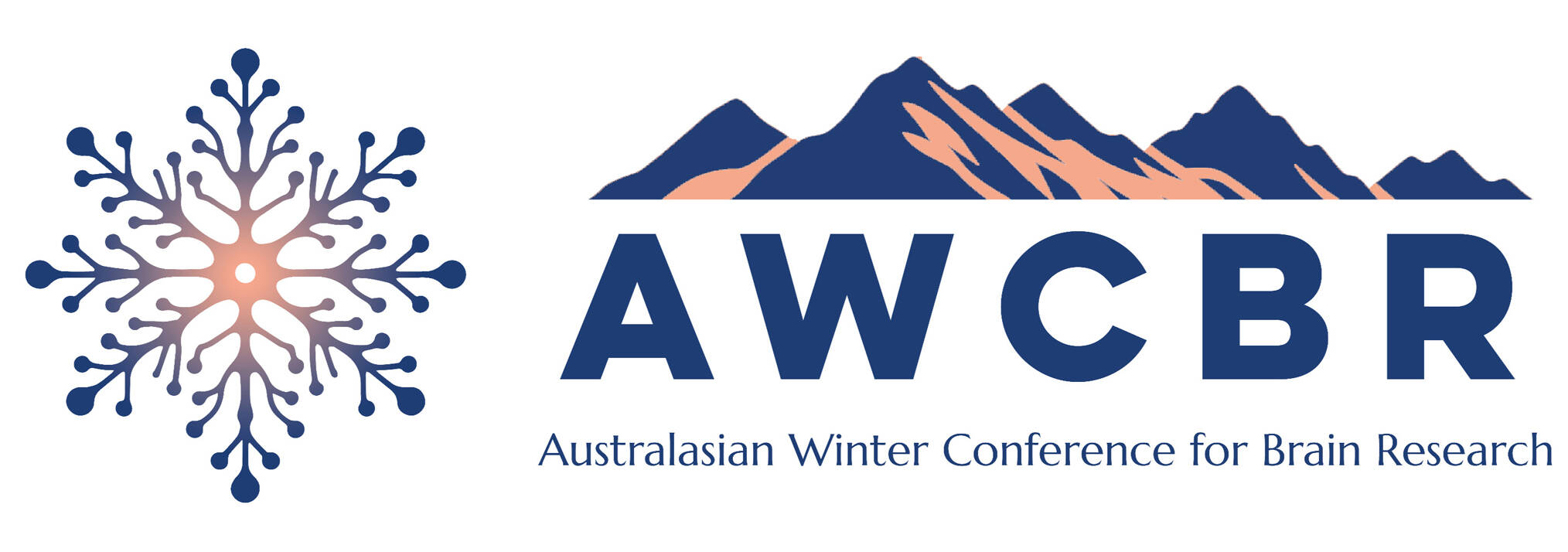2024 Round B Grant Recipients

University of Canterbury
$287,822
Protecting dystrophin-deficient muscle from contraction-induced damage
Loss of dystrophin, a protein in muscle that provides stability, causes Duchenne muscular dystrophy (DMD). The loss of dystrophin predisposes muscle to damage induced by contractions. Therapies for DMD, including genetic editing, are often evaluated by their ability to prevent contraction-induced damage, but many of them have not tested their capacity to protect against multiple insults despite these occurring countlessly throughout the lifespan of a patient. This project aims to determine if relevant therapies for DMD can protect against muscle damage induced by multiple contraction insults, which will either solidify their therapeutic potential or expose their functional inadequacies.

University of Auckland
$286,483
The role of peripheral immune cell infiltration after perinatal hypoxic-ischemic brain injury
Oxygen deprivation in infants around birth can result in brain injury, known as hypoxic-ischemic encephalopathy (HIE). The only treatment available is hypothermia (mild cooling), however, it doesn't help all babies. Add-on treatments to use with hypothermia to further reduce brain injury are needed. A potential mechanism to target is persisting inflammation, known to worsen brain injury. This can be driven by peripheral immune cells from the blood that enter the brain after injury. We will characterise this immune cell response and how this contributes to brain damage, which will help us develop better strategies to treat babies with HIE.

University of Otago
$194,910
Parkinson's disease: trends in treatment, mortality, & incidence
Parkinson’s disease is an age-related disorder with prominent movement difficulties that progress over time. The number of people with Parkinson’s is increasing worldwide. In this project we will use health administration databases, such as medication prescriptions, to provide up-to-date numbers of people with Parkinson’s and identify trends in treatment. We will also use information from death certificates to identify the main contributors to death in this group. This information is useful for healthcare, support services, and researchers to help improve the care of people with Parkinson’s.

University of Otago
$175,549
New mouse models of dementia to link novel therapeutics with clinical translation
The blood-brain barrier is made up of cells that line blood vessels in the brain and largely prevents blood-borne proteins and foreign substances, including therapeutic drugs, from entering the brain. Viruses hold great promise as a tool to deliver therapeutic genes to the brain but can't cross this barrier. In this project, we will develop new mouse models of dementia that exhibit a human-like blood-brain barrier, and test the ability of a novel non-pathogenic virus to cross into the brain and deliver a therapeutic gene. This technology opens up an exciting new avenue for treating a range of brain diseases.

University of Otago
$174,851
NON-STOP towards a treatment for CLN1 Batten Disease
CLN1 Batten disease is a fatal genetic childhood brain disease, resulting in blindness, seizures, dementia and motor deficits. Treatments are currently limited to symptom relief. The most common mutation in CLN1 disease, a premature stop signal, results in a short protein being produced and a loss of an enzyme required to keep neurons healthy. Our goal is to trick the cell into correcting the faulty stop signal so that a functional protein is produced. We will test our strategy in a CLN1 mouse model to test the effects on disease progression. If successful, this approach could benefit many CLN1 patients.

University of Otago
$143,155
Advancing Understanding and Treatment of Adolescent Idiopathic Scoliosis: Unveiling Neurological Mechanisms for Improved Outcomes
Adolescent Idiopathic Scoliosis (AIS) is a common condition that causes the spine to curve abnormally, affecting 1-5% of teenagers worldwide. Despite its prevalence, we still don’t know what causes it. Our research focuses on a specific mechanism that may disrupt the body’s ability to sense its position in space—a factor linked to AIS. Using a specialised mouse model, we’ll study how exercise might improve this sense of body awareness and slow scoliosis progression. By combining genetics, imaging, and practical interventions, we aim to uncover new ways to treat this condition and improve patients’ lives.

University of Auckland
$15,000
Development of genetic engineering tools for selective knockdown of APP; towards a ‘one- and done’ treatment for Alzheimer’s disease
Recent advances in understanding Alzheimer’s disease at the molecular level are driving new drug development. It is well known that a sticky protein called amyloid-beta accumulates in the brain in Alzheimer’s disease, but only recently has it has been shown that reducing amyloid-beta levels can actually slow the loss of brain function in patients. The ‘antibody’ therapy used works by removing the sticky amyloid protein but comes with some serious side effects and high cost. Our research is focused on developing an alternative, one-time genetic therapy that targets DNA to reduce amyloid production and prevent its accumulation altogether.

University of Auckland
$14,090
Does BCL6 drive brain cancer proliferation and resistance to therapy in vivo
The prognosis for people diagnosed with primary brain tumours is not good, particularly for high grade tumours like glioblastoma. To understand how best to design effective therapies, we need to understand what is driving the growth of the tumour. In this project we will see whether a protein called BCL6 is one of the 'drivers' of brain tumour growth, using a pre-clinical model. If we can confirm this, the next step will be to work out how to target BCL6 in brain tumours, by re-purposing BCL6 blockers developed for other cancer types.

University of Auckland
$242,205
Ubiquilin 2 at the X-roads: Modelling X-linked motor neuron disease pathology using patient-derived motor neurons
Motor neuron disease (MND) and frontotemporal dementia (FTD) are fatal conditions that cause muscle paralysis, and cognitive changes, respectively. A family in New Zealand and Australia have a mutation in the UBQLN2 gene, located on the X-chromosome, linking these diseases. Men in this family get sick earlier than women due to having only one X-chromosome, lacking a backup healthy UBQLN2 copy. This research will use stem cells from affected family members to grow motor neurons in the lab to help us understand how UBQLN2 causes MND/FTD, how it affects men and women differently, and its potential as a drug target.

University of Auckland
$243,020
Haploinsufficiency in Motor Neuron Disease: A Cellular Platform for Investigating Loss-of-Function Variants
Motor neuron disease (MND) is a devastating condition that affects nerve cells controlling muscles, leading to weakness, paralysis and eventually death, with New Zealand having one of the highest rates of MND globally. This project aims to create a flexible neuronal cellular model pipeline for investigating rare genetic variants that are predicted to reduce gene function. By creating cell models in the lab, we can observe whether and how such genetic changes disrupt normal cell function and lead to disease manifestation. Understanding this can help doctors provide better genetic counselling and support family planning decisions, for people affected by MND.
Mentored by Dr Emma Scotter, University of Auckland.

University of Auckland
$231,460
Integrating Systems Bioinformatics and Machine Learning to Identify Clinically Significant Molecular Biomarkers for Multiple Sclerosis Diagnosis
Many people with multiple sclerosis experience significant delays in receiving an accurate diagnosis, delaying vital treatment that could improve their quality of life. In this project, I will use advanced computational tools to study biological and clinical data from multiple sclerosis patients to discover potential biomarkers and develop a diagnostic model for earlier and more accurate diagnosis. Furthermore, my research will investigate the genetic causes of multiple sclerosis, aiming to uncover underlying mechanisms that contribute to the disease and inform the development of targeted therapies.
Mentored by Professor Justin O’Sullivan, University of Auckland.

University of Auckland
$166,174
Microglial Regulation of Blood-Brain Barrier Integrity and Astrocyte Function in Alzheimer’s Disease
Alzheimer’s disease (AD) is the most common neurodegenerative disorder, projected to affect 70,000 New Zealanders by the end of this decade. AD leads to severe cognitive decline and significantly impacts patients' quality of life, as well as that of their families. Inflammation is widespread in AD. Microglia, the brain’s immune cells, play a central role in this inflammation, which can worsen the disease. Additionally, the blood-brain barrier (BBB), which normally protects the brain, becomes damaged. This research project will uncover how microglia impact the BBB and contribute to AD progression, revealing new mechanisms for future treatments.

University of Auckland
$166,174
The Contribution and Mechanisms of Pericytes in Aberrant Extracellular Matrix Deposition and Signalling in Glioblastoma
Glioblastoma is the most aggressive brain cancer in adults and, sadly, has no cure. My research focuses on how this cancer spreads by examining its support structure, known as the extracellular matrix, and signals from nearby cells and immune factors that might drive harmful changes. By analysing patient samples and using advanced lab models such as organoids, I aim to uncover how these elements help glioblastoma invade healthy brain tissue. This understanding could lead to new treatment options which are especially needed in New Zealand, where glioblastoma is a leading cause of cancer-related deaths, especially among Māori children.

University of Auckland
$166,174
Uncovering the mechanisms of immune cell aging in dementia
Dementia is a disease of aging, but we don’t fully understand the difference between normal and diseased aging. Microglia, the brain’s immune cells, become prematurely aged in dementia and accumulate to harm other brain cells. We now need to uncover the mechanisms behind this premature cell aging to safeguard the brain from neurodegeneration. This project will use human brain cells and tissue to understand more about the abnormal aging of microglia in dementia and discover new drug targets, ultimately transforming the treatment of dementia.

$20,000
Australasian Winter Conference on Brain Research
The Australasian Winter Conference on Brain Research (AWCBR) is the major congress for Neuroscience in Aotearoa. The New Zealand Neurological Foundation (NZNF) has generously supported the AWCBR Society in the past. Thanks to this financial backing, we have been able to subsidise the travel costs of students and early career researchers (ECRs) in Aotearoa presenting their research at the annual meeting. The funding we have receieved from the NZNF will be used to continue the support of New Zealand based Students and ECR's at the 2025 meeting, to be held 1st – 4th September 2025 at Te Pae Conference Centre, Christchurch.

$14,000
Australasian Neuroscience Society: Australasian Course in Advanced Neuroscience (ACAN)
For more than 17 years, The Australasian Course in Advanced Neuroscience (ACAN) has been at the forefront of providing advanced neuroscience training to the next generation of neuroscientists. This intensive three-week course, held at The University of NSW, offers hands-on experience in the latest experimental techniques required to uncover the mysteries of the brain. In addition, students live and learn alongside renowned scientists from around the world. By supporting ACAN the NZ Neurological Foundation enables young New Zealand scientists to receive state-of-the-art neuroscience training and creates a pathway for them to contribute to groundbreaking discoveries in the field.

Functional Neurological Disorder: Language Matters One-day symposium
$7,686.50
Aotearoa’s first symposium on functional neurological disorder (FND) meets an urgent need for FND education and local research. FND is prevalent, debilitating, yet largely invisible in New Zealand, resulting in a reliance on outdated understandings which prevent progress and reinforce stigmatised attitudes. Recognising language as key to challenging stigma, the symposium aims to connect researchers, clinicians, and people with FND to form a network that will drive our collective work of education and change. This is a first step toward restoring dignity for the underserved FND community and to the upskilling of practitioners that is crucial to this task.

University of Auckland
$8,500
Astrocyte reactivity in cases of Chronic Traumatic Encephalopathy with comorbid pathology
In New Zealand, there is a growing awareness of a neurodegenerative disease called Chronic Traumatic Encephalopathy (CTE) affecting former athletes. Currently, CTE diagnosis requires postmortem analysis, with a focus on the abnormal accumulation of tau protein. However, the coexistence of other aggregated proteins usually associated with Alzheimer’s disease, Parkinson’s disease and motor neuron disease, complicates CTE diagnosis. We will investigate whether markers of neuroinflammation are consistent indicators of CTE, even when mixed pathology is present. This project will contribute to improved tools for CTE diagnosis in living people and enhance our understanding of how repeated head trauma can drive neurodegeneration.
Supervised by Dr Helen Murray, University of Auckland.

University of Otago
$8,500
Exploring potential loss-of-function genetic variants in CRNKL1
This research aims to provide answers to families whose lives have been changed by neurodevelopmental disorders. In many cases, those affected cannot be provided a diagnosis because of their genetic individuality. Our goal is to conduct an in-depth investigation into a couple of small genetic alterations that could be implicating a crucial cellular mechanism underpinning a great deal of how cells function. If we can find a link between these alterations and the neurodevelopmental disorder, we can provide families with an answer and begin to understand how different parts of a cell’s function can impact neurology.
Supervised by Associate Professor Louise Bicknell, University of Otago.

University of Auckland
$8,500
Evaluating BACH2 protein expression in immune and glial cells following spinal cord injury
In this project, I will study the role of a gene called Bach2 in the spinal cord, specifically after an injury. Using a rat model of spinal cord injury, I’ll look at which cells in the spinal cord express Bach2 and how its levels change after damage. By understanding how this gene controls inflammation and healing, we aim to discover new ways to treat spinal cord injuries, which can lead to paralysis. Ultimately, this research could help develop therapies to protect the spinal cord and improve recovery for people affected by these life-changing injuries.
Supervised by Dr Simon O'Carroll, University of Auckland.

University of Otago
$8,500
Effects of postnatal agmatine treatment on maternal immune activation offspring
The COVID-19 pandemic has led to widespread infections, including in pregnant women. Prenatal exposure to viral infections (maternal immune activation) increases the risk of neuropsychiatric conditions in children, such as schizophrenia and autism. My research will use an animal model to investigate whether a treatment called agmatine can reduce hyperactivity and brain inflammation in offspring exposed to viral infections in the womb. Positive findings could help develop treatments for children affected by maternal immune activation, potentially improving their neurological outcome.
Supervised by Professor Ping Liu, University of Otago.

University of Waikato
$5,000
Applied Power Electronics Conference (APEC) in Atlanta, USA

Victoria University of Wellington
$4,200
European Committee for Treatment and Research in Multiple Sclerosis (ECTRIMS), Copenhagen Denmark

Victoria University of Wellington
$4,500
Annual meeting of the Cooperative Trials Group for Neuro-Oncology (COGNO) and Australian Brain Cancer Research Alliance (ABCARA) Scientific Research Symposium, Melbourne, and Society for Neuro-Oncology (SNO) annual meeting, Houston

University of British Columbia
$3,090
International Society for Frontotemporal Dementia (ISFTD) Meeting, Amsterdam, Netherlands

Victoria University of Wellington
$3,867
European Committee for Treatment and Research in Multiple Sclerosis (ECTRIMS), Copenhagen Denmark

University of Canterbury
$3,500
Neuroscience 2024, Society for Neuroscience annual meeting, Chicago

University of Auckland
$2,018
Australasian Neurotrauma Symposium, Perth

University of British Columbia
$1,410
Alzheimer’s Association International Conference (AAIC) in Philadelphia, Pennsylvania, USA

Matai Medical Research Institute
$544
Australasian Winter Conference for Brain Research (AWCBR)


